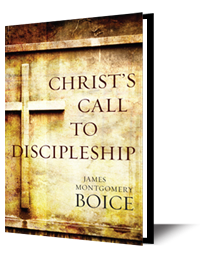Tuesday: Jesus and Mary Magdalene
Theme: What Happened to Jesus?
In this week’s lessons, we look at another story unique to John’s Gospel, and see what important truths are illustrated for us in Jesus’ encounter with Mary Magdalene after his resurrection.
Scripture: John 20:1-18
So Mary Magdalene started off and found Peter and John. Now while she was doing that, it began to get a little brighter in the garden, and the women who remained made their way closer to the tomb. They looked in, and there they saw the angels who appeared to them and announced the resurrection. They said, “He's not here. Come, see where the Lord lay. Then go quickly and tell his disciples that he's risen from the dead.” And having received that instruction, the remaining women hurried off to find the disciples.
In the meantime, Mary had already reached Peter and John. When she told them what she and the other women had seen, they immediately started out for the tomb. John outran Peter and looked in the tomb. Here, the Greek word he uses for “look” means only “to glance in.” John sees that there are grave clothes in there, but that's all. Now, while he’s standing there outside the tomb looking in, Peter arrives. But Peter goes into the tomb for a closer look. He saw the grave clothes lying there. But he also noticed that the head cloth was off by itself, separated from the grave clothes by a little space, a space where the shoulders and neck of Jesus Christ would have been. At this point in the story, John uses another word to describe what Peter saw. It’s the Greek word from which we get our word “theorize.” In other words, Peter began to puzzle over that. He was trying to devise a theory that would explain how the grave clothes could have gotten in that position.
If somebody had stolen the body, the grave clothes would have been removed along with the body. Or if they had taken time to unwrap them for some strange reason, it is very unlikely they would be arranged as they were. Yet, there they were, just as they had been when they were around the body, and the body was gone. At this point John goes into the tomb and he uses the third of these three words for "seeing.” This last one means “to see with perception.” He perceived what had happened. The only thing that would account for that is a resurrection, and that's why he says, giving his own testimony, that he saw and believed. After this, these two disciples left and made their way back into the city.
Now we know from the twenty-fourth chapter of Luke that something else went on that morning. The Emmaus disciples, probably Cleopas and his wife, were leaving Jerusalem to go home. The reason is that as far as they were concerned, everything was over. The dream was done. They had expected that Jesus was the Messiah, the Deliverer, the one who was going to drive the Romans out and restore the throne of David. That's the way they were thinking of his ministry in those days. Thus, when he died, they realized that the dream would never come true. And it was over, and so they were going home.
While they were packing, the women came back from the garden and reported that the body was gone. Moreover, they said there were angels who appeared and told them that Jesus Christ was risen. And while that was going on, Peter and John came and they had the same story. But even after hearing these things, that didn't convince the Emmaus disciples at all. Later on, of course, they did come to understand what had really happened, after Jesus himself met them on the way back to Emmaus. All of this was going on that morning.
Which brings us now to Mary, who after finding Peter and John made her way back to the tomb. It was her love for him that brought her there. It's worth asking who this woman was. We don't know a great deal about her. We do know, because of something that is said in the eighth chapter of Luke, verse 2, that she had been delivered of seven demons. It doesn't say there explicitly that Jesus had done it, but I think that is probably to be assumed. Jesus had delivered her from this demonic possession.
There is a tradition in the church that she's also the unnamed woman who anointed his feet with ointment and wiped them with her hair in the house of the Pharisee. This is not the same story that we find in the twelfth chapter of John, which involved Mary of Bethany. In the story involving this unnamed woman in Luke 7, we are told she was a sinful woman, which probably means that she was a prostitute. Even though there is no evidence that this unnamed woman is Mary Magdalene, that's usually the way she is pictured in literature and movies. In fact, in Europe “Magdala” is a word that's even used to mean a reformed prostitute. The only thing we know for sure is that she had been demon possessed, but was delivered by Jesus, which explains why she is so devoted to him.
Study Questions:
- What three kinds of “seeing” does John describe by using three different Greek verbs?
- What curious thing did Peter observe about the grave clothes?
- While Mary is finding Peter and John, what do the other women do?
- What did Mary and others of the time think Jesus was going to do as their Messiah?
For Further Study: Just as Jesus healed Mary Magdalene of her demon possession, so he also healed many others of various kinds of serious afflictions. To see another example of Jesus’ great compassion, download and listen for free to James Boice’s message, “Jesus and the Paralyzed Man.” (Discount will be applied at checkout.)
Think and Act Biblically from James Boice is a devotional of the Alliance of Confessing Evangelicals. It is supported only by its readers and gracious Christians like you. Please prayerfully consider supporting Think and Act Biblically and the mission of the Alliance.


















